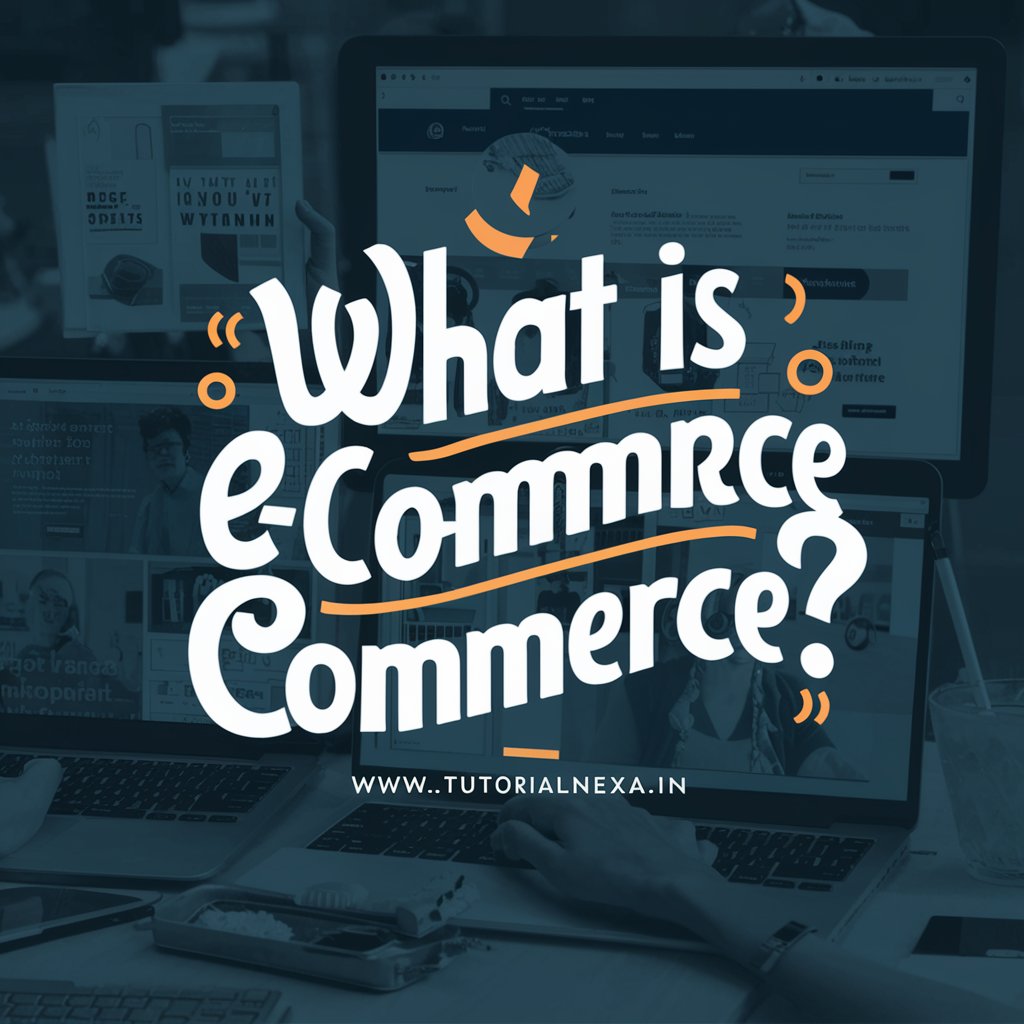E-commerce, short for electronic commerce, refers to the buying and selling of goods or services over the internet. It involves transactions conducted electronically between businesses, consumers, or between individuals. Essentially, any commercial transaction that takes place online falls under e-commerce.

Key Concepts and Terms:
- Online Store: A website where products or services are displayed and can be purchased.
- Payment Gateway: A service that authorizes payment for online businesses, ensuring secure transactions.
- Shopping Cart: Virtual cart where selected items for purchase are stored during online shopping.
- Digital Marketing: Promoting products or services using digital technologies, often integral to e-commerce success.
Example: Imagine you want to buy a new smartphone. Instead of going to a physical store, you visit an online store like Amazon or Apple’s website. You browse through various models, select the one you want, add it to your virtual shopping cart, proceed to checkout, and pay using your credit card or another online payment method. The smartphone is then delivered to your doorstep.
Real-World Application: E-commerce is ubiquitous today, with examples ranging from retail giants like Amazon and Alibaba to smaller, niche online stores. It enables businesses to reach global audiences, operate 24/7, and offer personalized shopping experiences. For consumers, it provides convenience, choice, and often lower prices compared to brick-and-mortar stores.
Helpful Tips:
- Tip 1: Remember, e-commerce encompasses any business transaction conducted online.
- Tip 2: Understanding the role of digital marketing is crucial for e-commerce success.
- Tip 3: Be aware of cybersecurity measures when making online transactions.
Common Misconceptions:
- Misconception: E-commerce is only about selling physical goods.
- Clarification: E-commerce also includes digital products, services, and even online subscriptions.
This study note should provide a solid foundation for understanding e-commerce, its components, and its practical applications in today’s digital economy.

Types of E commerce :
Types of E-commerce
Explanation:
E-commerce, or electronic commerce, refers to the buying and selling of goods and services over the internet. There are several types of e-commerce models that businesses use to conduct transactions online. Understanding these types helps in identifying how businesses operate in the digital marketplace.
Key Concepts and Terms:
- Business-to-Consumer (B2C): This is the most common type where businesses sell products or services directly to individual consumers. Example: Online retail stores like Amazon or clothing brands selling directly to customers through their websites.
- Business-to-Business (B2B): In this model, businesses sell products or services to other businesses. Example: Companies that supply raw materials to manufacturing firms or software providers offering services to corporations.
- Consumer-to-Consumer (C2C): This involves transactions between individual consumers, facilitated by a third-party platform. Example: Online marketplaces like eBay or Craigslist where individuals buy and sell goods with each other.
- Consumer-to-Business (C2B): This model occurs when individuals offer products or services to businesses. Example: Freelancers offering their services to companies through platforms like Upwork or Fiverr.
- Business-to-Government (B2G): This involves businesses selling products or services to government organizations or agencies. Example: Companies bidding for government contracts to provide infrastructure or services.
Example:
Imagine you’re a small business owner who sells handmade jewelry online (B2C). You list your products on your e-commerce website, and customers browse and make purchases directly from your site. This illustrates the B2C e-commerce model where the business (you) sells directly to consumers (your customers).
Real-World Application:
An example of B2B e-commerce can be seen in the relationship between a manufacturer of computer parts and a computer assembly company. The manufacturer sells components like processors and RAM in bulk to the assembly company, which then integrates these parts into finished computers for sale.
Tips and Mnemonics:
- Tip: Remember the types of e-commerce by thinking about who is involved in the transaction: businesses selling to consumers (B2C), businesses selling to other businesses (B2B), etc.
- Mnemonic: “B2C is Business to Consumer, B2B is Business to Business, C2C is Consumer to Consumer, and C2B is Consumer to Business.”
Common Misconceptions:
- Misconception: E-commerce is only about selling physical products. In reality, it also includes digital products, services, and even subscriptions sold online.
Understanding these types of e-commerce models is crucial for businesses to strategize their online presence and for individuals to grasp how online transactions occur in different contexts.

